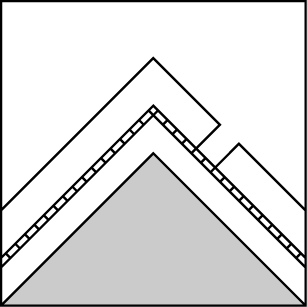Basic Information
Observation Details
Observation Date:
November 22, 2022Submitted:
November 23, 2022Observer:
SAC - VandenBos, PreussZone or Region:
Galena Summit and Eastern MtnsLocation:
Baker Creek Drainage (6,700-9,300', primarily E-NE-N-NW)Signs of Unstable Snow
Recent Avalanches?
None ObservedCracking?
None ExperiencedCollapsing?
None ExperiencedSnow Stability
Stability Rating:
GoodConfidence in Rating:
ModerateStability Trend:
SteadyBottom Line
We found a thin and weak snowpack that is unlikely to behave well once loaded. Thin snowpack hazards are widespread. The interface between November snowfall and remnant October snow looks like it could continue to produce avalanches when loaded, particularly where the October snow was thick enough to cover terrain variations (rocks, stumps, logs, etc.).
Advanced Information
Weather Summary
Cloud Cover:
Mostly SunnyWind:
CalmClear skies in the morning with bands of high clouds building in the early afternoon. Calm to light winds. Temperature inversion detectable by feel.
Avalanche Observations
We observed no avalanches in the terrain we moved through and glassed.
Snowpack Observations
HS is 30-35cm at valley bottom, increasing to 50-60cm by 8,000'. Near the valley floor and extending up for roughly 500' vertically, the entire snowpack has faceted. Here, you are basically walking/riding/skiing on the ground. As you gain elevation, snowpack depth increases and the middle 20-30cm of the snowpack has a bit more meat to it (4F instead of F/F-), which keeps you off the ground with skis on, but not boots. We observed a fair bit of small, spotty SH, but nothing like what I observed in the East Fork of the Big Wood the day before or what has been reported much further north on Copper. The SH that we saw did not look like it would produce an avalanche problem, but the snow surface is so weak anyways that it probably doesn't matter much. This type of snowpack will not respond well to a rapid load.
We dug at 8,000' on a N/NW facing slope and found a 5-10cm layer of remnant snow from October at the base of the snowpack. The majority of this was a dense, crusty mass of slightly moist snow, with a thin (1-3cm) layer of 2-3mm advanced facets on top. Some of these grains are beginning to cup and striate and are on their way to being well-formed depth hoar. ECTs performed here returned variable results (ECTP13, ECTN15, ECTN22, all down 45-50cm. I'd attribute the variability in results to the variability in the layer itself at this location. The layer was somewhat rough and discontinuous. Suspect this would look worse where there is more old snow and the layer is smoother and better connected.
Avalanche Problems
| Problem | Location | Distribution | Sensitivity | Size | Comments |
|---|---|---|---|---|---|
 Wind Slab
Wind Slab
|
|
Comments: Rose shaded based on where thin wind slabs are most likely to exist: exposed upper elevation terrain. We encountered a few dense slabs (1F to P) that were unreactive. |
|||
 Persistent Slab
Persistent Slab
|
|
Unknown |
Weak Layer(s):
Nov 1, 2022 (FC)
Comments: Rose is shaded based on where older snow is known to exists. This layer returned variable results (ECTP13, ECTN15, ECTN22, all down 45-50cm. I'd attribute the variability in results to the variability in the layer itself at this location. |
Dry loose "facet-lanches" would also be possible in steep terrain, particularly below the level of the inversion.
Terrain Use
Terrain use was largely dictated by snow coverage and the desire to avoid a collision with hard objects. As we climbed into areas where thin wind slabs existed and where October snow made up the base of the snowpack we let the presence of these features dictate our travel options.

